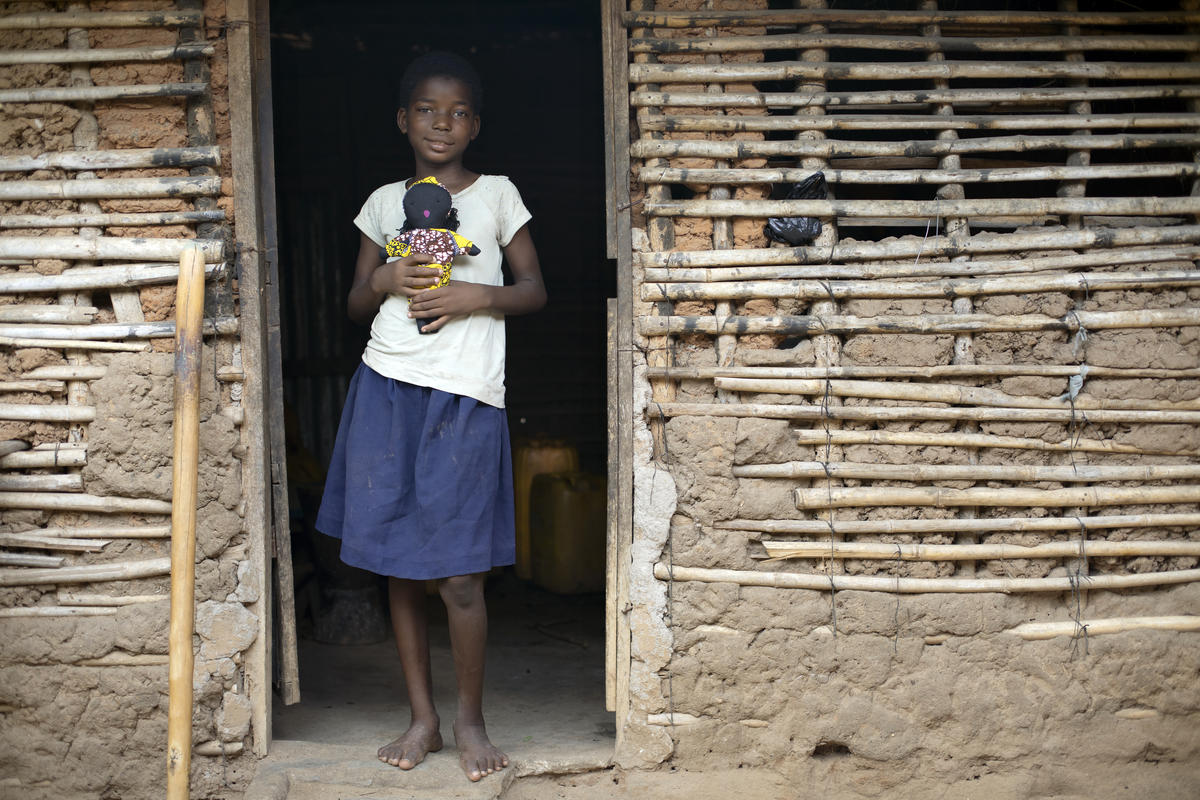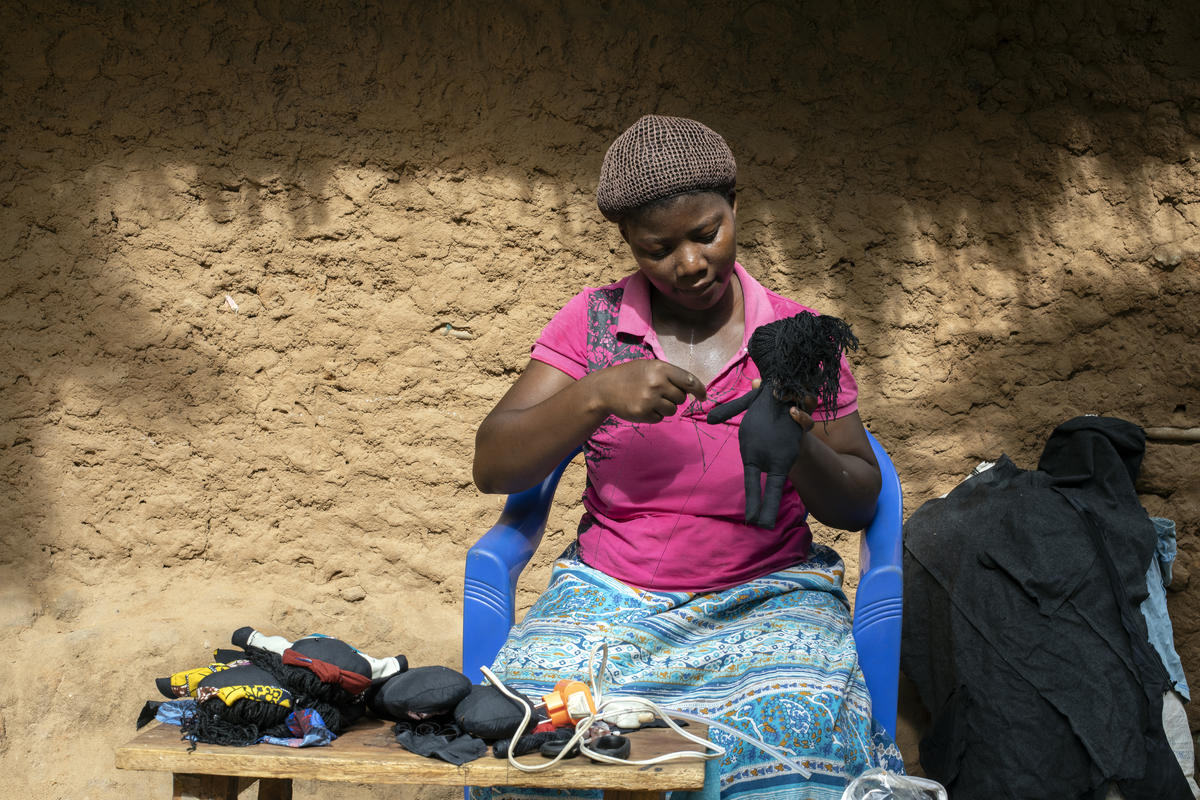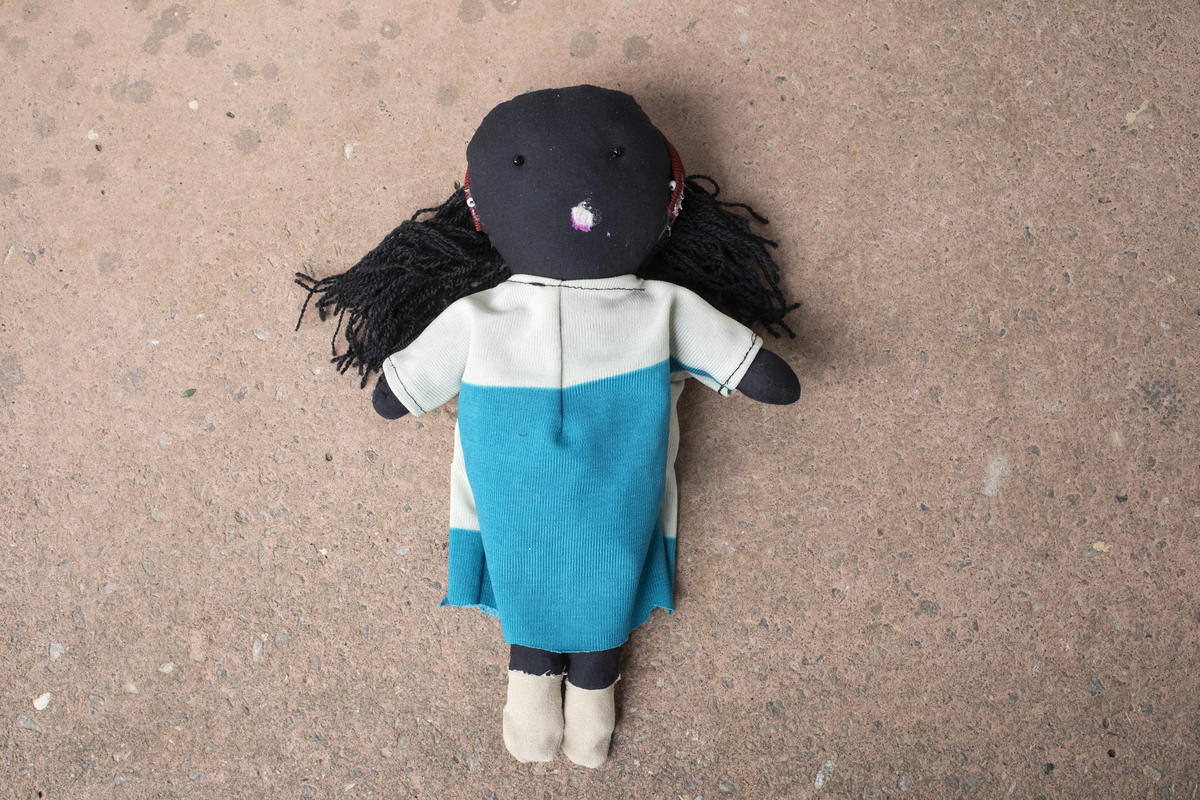Making dolls provides hope for Congolese refugee
Three words can describe Kituza. Mother, refugee and survivor. There’s another term that speaks to her creativity and resilience: doll maker.
Kituza began making dolls to earn money to support her family of five children in Maratane, a refugee camp in northern Mozambique. But with time, it has evolved into a form of therapy and an escape.
“Making these dolls helps me a lot and that is why I do it with all my heart,” says Kituza, 25.
The dolls are made with second-hand materials and capulana, a colourful African fabric. Stitching them requires intense concentration and Kituza seems unbothered by the noises and activities around her as she makes one painstaking stitch after another, adding beads for eyes and earrings and pink strips for mouths. She ignores the chickens pecking at her feet and the sounds of children playing nearby.
“Making these dolls helps me a lot and that is why I do it with all my heart.”
Born in the Democratic Republic of the Congo’s Uvira province, Kituza was kidnapped one night in 2008, after rebels attacked her hometown, raped her and killed her parents. She was only 16.
“When my parents tried to help me, the rebels killed them. Then they took me to a forest with five other women,” she says, wiping tears from her eyes and holding a doll close.
She adds that they were held for a long time in a small grass house in the forest, where they were continuously tortured and raped.
“I got pregnant and gave birth there,” she says.
She eventually escaped to Mozambique and settled in Maratane, a refugee camp in Nampula province that hosts about 9,000 refugees, mainly from the DRC and Burundi.
Kituza has never been to school, but she learnt to make dolls from a local church group in the camp in 2018. Now, UNHCR, the UN Refugee Agency, is helping her manage and grow her business.
She is the only one making dolls in the camp. Her break came after she took one of her creations to a nearby Catholic church to try to sell it.
“I showed it to a nun called Giovanna. She loved the doll so much that she made an order for 160 dolls to take back to her home country, Italy,” Kituza says.
With her husband’s help, she worked day and night making the dolls.
“My husband, Fariji, worked on the sewing machine making the clothes, socks and shoes as I stuffed the bodies, then added the eyes and the mouths,” she said. She used the proceeds from the initial sale to boost her business.
Adaiana Lima, a UNHCR livelihoods officer based in Nampula, says Kituza is an example to other women. She explains how UNHCR supports refugees like Kituza through programmes like the Graduation Approach, a sequenced project that supports the most vulnerable refugees and local Mozambicans, to attain self-reliance and gradually reduce dependence on relief aid.
“We support them through training, mentorship and helping them find a market for their skills and goods,” says Lima. “To continue this work, we need the support of not only governments but also the private sector, international financial institutions and the civil society.”
Refugees’ access to work and their ability to be self-reliant is a crucial element of the Global Compact on Refugees, which calls for increased solidarity with refugees and the communities that host them.
“I have suffered a lot but when I look at the dolls... I feel relief.”
In its efforts to align its refugee response with the Compact, Mozambique has made several pledges that include integration of refugees into national systems through increased access to education, health, sports and income projects like Kituza’s dollmaking, which promote their inclusion and social cohesion with their host communities.
Kituza spends her days seated at her door, making the dolls and can make up to five a day. She hopes to bring the joy and healing she has received from her dolls to others in the camp and beyond.
“I have suffered a lot but when I look at the dolls and I know that I made them, I feel relief,” she says.













